Recent Articles
Popular Makes
Body Types
2017 BMW X5 xDrive40e Road Test and Review
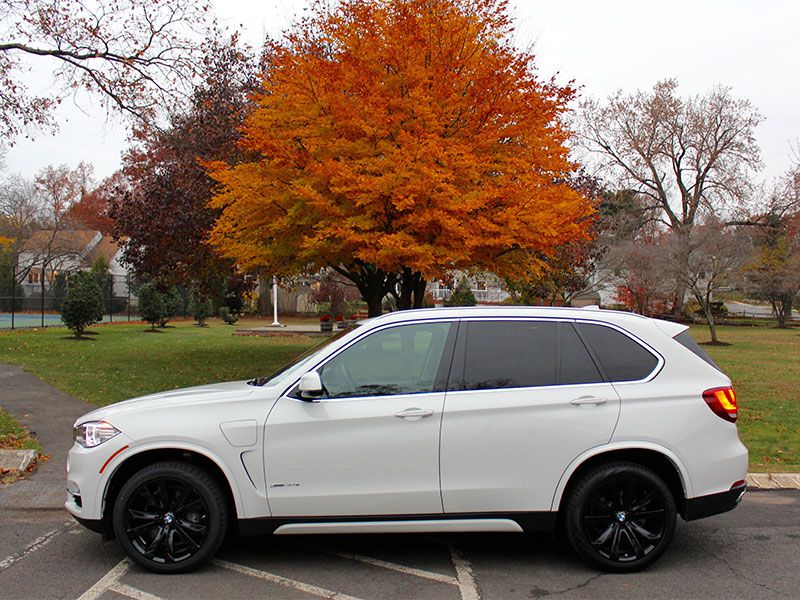
2017 BMW X5 xDrive40e exterior profile by Miles Branman ・ Photo by Miles Branman
Few drivers would turn down the opportunity to spend less time at the gas station, but most aren’t ready to accept the sacrifices associated with an all-electric vehicle. Range anxiety has lessened as battery technology has improved, but most EVs still lack the equivalent driving range of a gas-powered vehicle, and charging stations have yet to saturate every neighborhood.
This reality has kept traditional hybrid vehicles relevant, but we’re beyond the days of basic gas-electric energy handoffs. Plug-in hybrids offer all-electric driving for short distances, hybrid power for maximum fuel economy, and recharging via the gas engine. It’s the most efficient option for those who aren’t ready to take the all-electric leap.
While plug-in hybrid tech started on the mass-market end of the automotive spectrum, luxury brands have embraced the trend as of late. To compound intrigue, premium automakers have adapted their most popular vehicles (SUVs) to accommodate electrically assisted powertrains. BMW’s X5 xDrive40e is one such example, promising a refined approach to efficiency.
BMW iPerformance
BMW’s iPerformance brand has grown to include the 330e, X5 xDrive40e, BMW 740e, and 2 Series Active Tourer (Europe only). These plug-in hybrid models are positioned as the most efficient gas-powered variants in their model ranges. Diesel versions of each car tend to average higher miles per gallon, but the ability to travel on electricity alone for short distances is a distinct advantage of iPerformance vehicles.
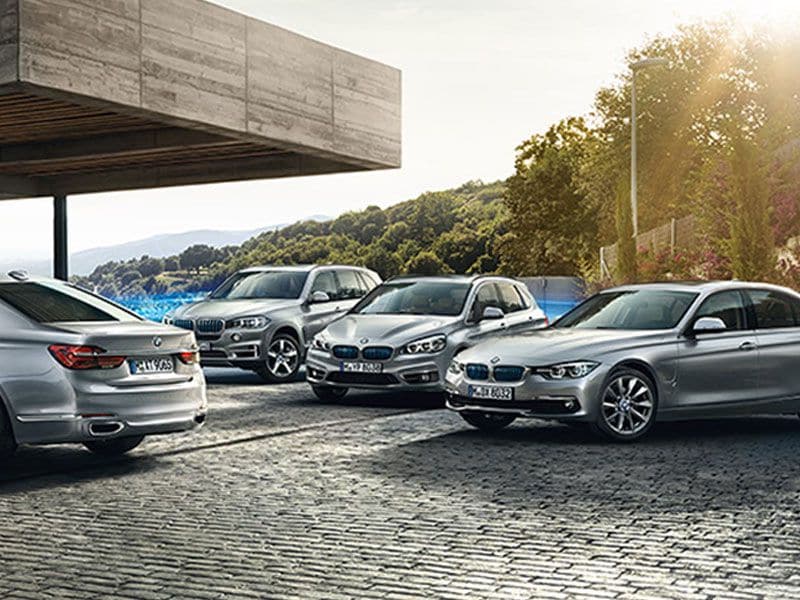
Photo by BMW
eDrive Powertrain
The 2017 X5 xDrive40e combines a 2.0-liter turbocharged 4-cylinder with an electric motor for a total of 308 horsepower and 332 lb.-ft. of torque. The X5’s 4-cylinder engine is used elsewhere in the BMW lineup as a standalone powertrain, and it could likely move the xDrive40e’s 5220 lb. just fine, but the addition of the electric motor’s instant torque makes it a respectably quick SUV. The plug-in X5 can travel up to 14 miles on electricity alone at speeds up to 75 mph. This hybrid X5 hits 60 mph in 6.5 seconds, just a shade slower than the lighter xDrive35i, and top speed is electronically limited to 130 mph. Credit must be given to BMW’s 8-speed automatic transmission, which quickly works through the gears, and to the X5’s permanent all-wheel drive system—a standard feature of every xDrive40e.
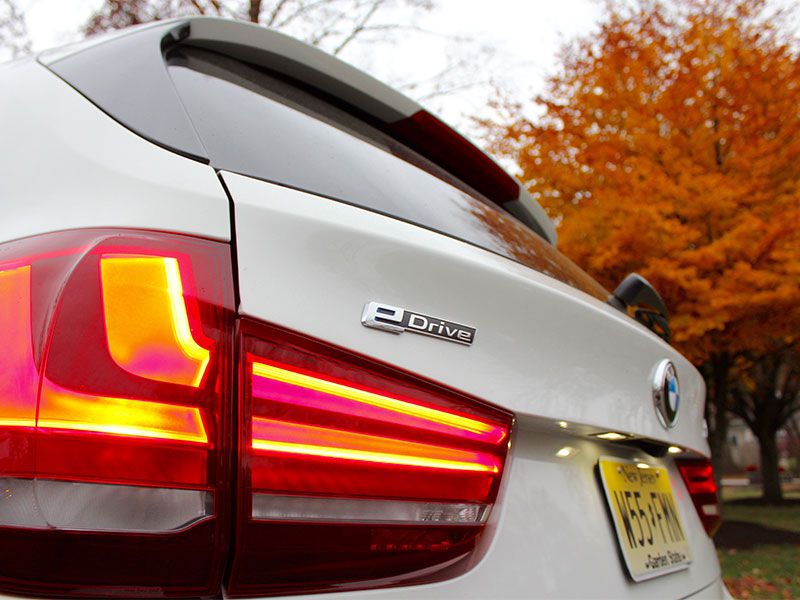
Photo by Miles Branman
Efficiency Takes Effort
Turning a large SUV into a frugal commuter is no easy task, but the xDrive40e’s EPA estimates of 23 MPG city, 25 MPG hwy, 24 MPG combined, and 56 MPGe, will warrant the price premium for many. However, the plug-in hybrid’s efficiency can vary greatly by driver behavior and attention. I don’t just mean how aggressively one mashes the throttle. Careful use of BMW’s three chassis modes (Sport, Comfort, and Eco Pro) and three eDrive (Auto eDrive, Max eDrive, and Save) modes can maximize the X5’s efficiency. If, however, drivers choose to put everything in automatic settings, they could be leaving valuable MPG on the table. The most efficient mode pairing depends on driving conditions. To quickly recharge the 9kW battery, Sport and Save modes can be used in tandem to turn fuel into electric energy reserves. When driving on the highway, Comfort and Save modes will allow the transmission to switch to a higher gear, and won’t rely on electric power at cruising speeds. Finally, Auto eDrive and Eco Pro are best for around town, where you can use electric torque off the line before the gas engine takes over. Plugging the X5 xDrive40e in as much as possible will dramatically improve fuel economy over short to medium distances, but if you plan to rack up a lot of miles each day, you’ll need to plan your most efficient drive mode combinations. It’s also worth noting that the plug-in X5 takes seven hours to fully recharge its battery from a standard 110V outlet.
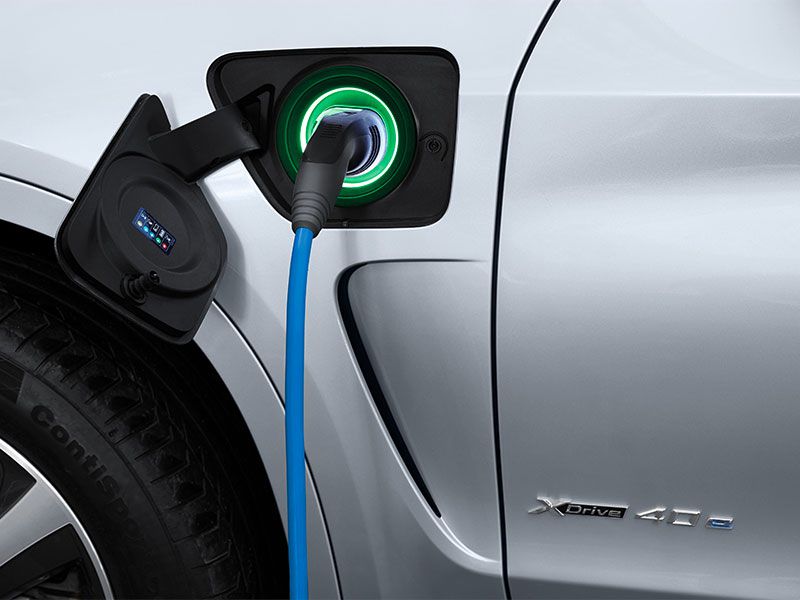
Photo by BMW
Driving Dynamics
Though it’s saddled with 430 more pounds than the xDrive35i, the plug-in X5 handles with typical BMW precision. The SUV’s chassis is unfazed by abrupt lateral movements and steering input is immediately communicated to the front wheels. Brake feel is on the lighter side, but a full-force press of the pedal hauls the big BMW suv down quickly.
Those who haven’t driven a hybrid with regenerative braking may take some time to adjust to the slowing sensation. Sport mode has the most noticeable regen when lifting off the throttle, while Eco Pro hardly feels different from a standard gas-powered vehicle. Perhaps the most impressive characteristic of the xDrive40e’s performance is the seamless transition between electric and gas power. Addictive, instant electric torque turns into quiet internal combustion with hardly an indicator.
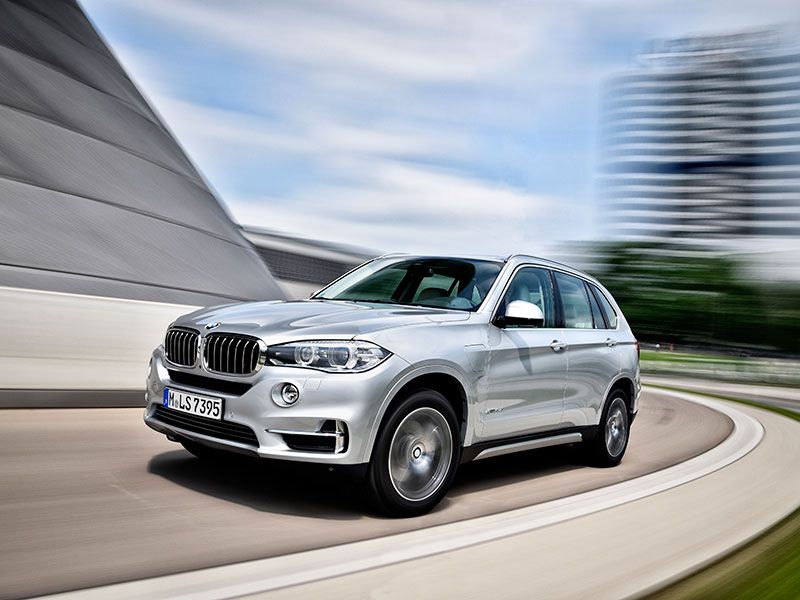
Photo by BMW
Exterior Design
Picking the BMW xDrive40e out from a row of other X5s takes a keen eye. Apart from a plug cap in front of the driver’s door, the hybrid wears subtle xDrive40e badges on its tailgate and front quarter panels. While other alternative-energy vehicles shout their environmental friendliness via large emblems, unique wheels, and other exterior accents, the plug-in X5 prioritizes a clean, upscale look. Piercing Xenon headlights, chrome touches on the front inlets, grille, and fog light housings, and gorgeous 20-inch light alloy wheels in gloss black make the X5 one of the most handsome in its premium segment.
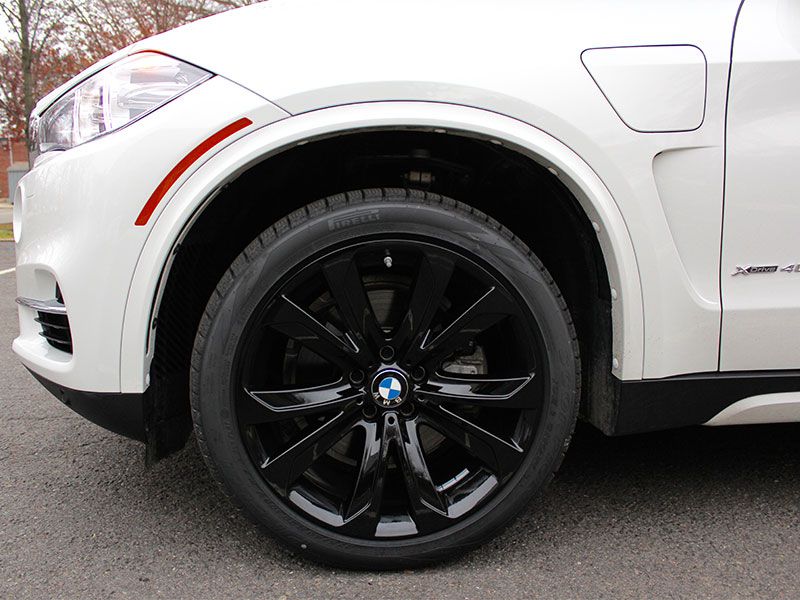
Photo by Miles Branman
Interior Comfort
The X5’s exterior modesty continues inside, with a sleek, minimalist layout, piano black trim on the center stack, elegant wood panels throughout, and a leather-wrapped dashboard. My tester is equipped with Mocha Nappa leather seats, which nicely contrast the Alpine White exterior. Passenger volume is excellent, and the standard panoramic sunroof gives the cabin a sense of space. Standard 14-way heated front seats contour to just about any comfortable position, and if you opt for the Cold Weather Package ($550), rear occupants enjoy their own heated seats. Though the hybrid’s battery and eDrive sacrifice some cargo space, there’s still a respectable 34 cubic ft. available behind the rear seats and 73 cu. ft. with the split-folding rear bench stowed. All xDrive40e models come standard with a 10.2-inch infotainment system and iDrive controller. The vivid display can split media, navigation, and vehicle information for multi-tasking needs, and the optional surround-view camera system chimes in with proximity alerts at low speeds. Though the X5 offers wireless charging in the Premium Package, the lack of multiple USB ports seems like an oversight.
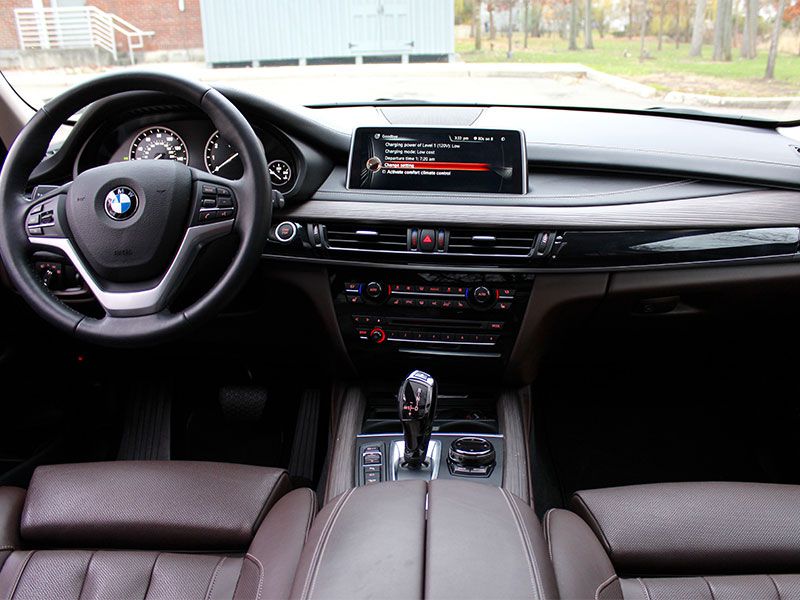
Photo by Miles Branman
X5 Model Matchup
Before comparing the X5 xDrive40e to its competition, it’s worth understanding how the plug-in variant fits within its own model range. The entry point to the X5 nameplate is the sDrive35i, which uses a 3.0-liter turbocharged inline-6 to deliver 300 hp and 300 lb.-ft. of torque. Prices for the 35i start at $54,700 and the addition of AWD (xDrive) brings the marker to $57,000. Those looking for improved fuel economy without BMW’s eDrive system will prefer the xDrive35d ($57,700), which uses a 3.0-liter turbodiesel inline-6 to make 300 hp and 413 lb.-ft. of torque. In addition to greater performance, the diesel option averages 23 MPG city and 29 MPG highway (5 MPG better in both conditions than the xDrive35i). Finally, the xDrive50i ($71,500) swaps the 6-cylinder for a 4.4-liter twin-turbo V8 that makes 445 hp and 480 lb.-ft. of torque.
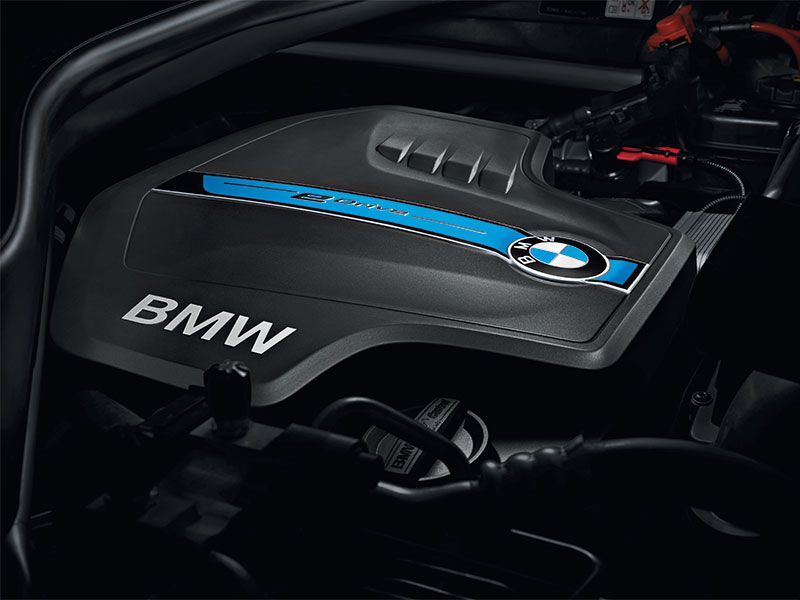
Photo by BMW
Pricing/Packaging
As with other premium vehicles, the BMW X5 xDrive40e starts as an attainable proposition, but can quickly transcend affordability thanks to an extensive list of options. Going hybrid will set buyers back $63,095—$5900 more than the AWD 35i and $4400 more than the 35d—but federal and state tax incentives will lower that figure. A Premium package ($2550) adds features like wireless charging, a WiFi hotspot, 4-zone climate control, and Sirius XM satellite radio. The basic Driver Assistance package ($1400) includes a rearview camera and head-up display, while Plus ($1700) bundles lane-departure warning, frontal collision warning, city collision mitigation, and a surround view camera. Other upgrades include ventilated seats ($1350), a Harman Kardon sound system ($875), and adaptive high beams ($1900).
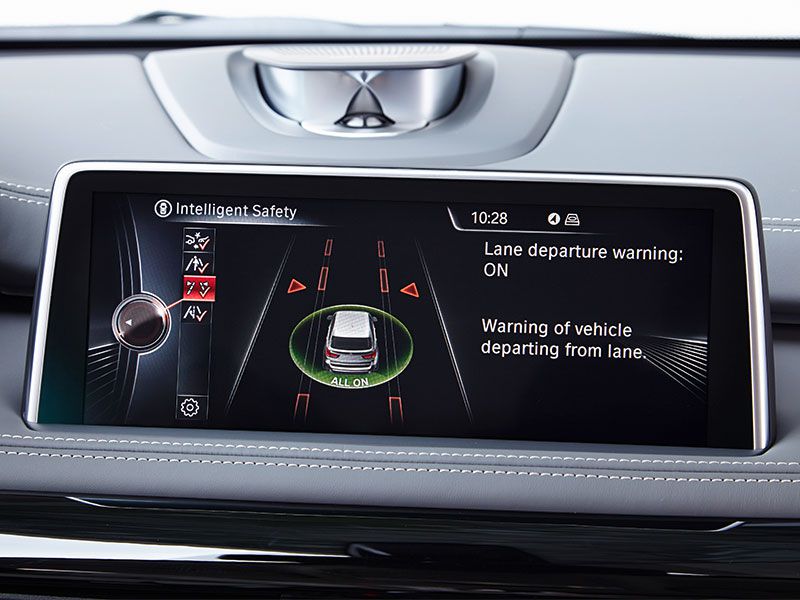
Photo by BMW
Competition
The 2017 BMW X5 xDrive40e competes with two main luxury rivals: the Mercedes-Benz GLE550e and Porsche Cayenne S E Hybrid. Both models cost more than the X5 ($66,300 for the Merc, $78,700 for the Porsche), but they offer significantly improved performance. The GLE550e boasts 436 hp and 479 lb.-ft. of torque from a bi-turbo V6 and electric motor, while the Porsche delivers 416 hp and 436 lb.-ft. of torque from an Audi-derived supercharged V6 and e-motor combo. The Mercedes offers 12 miles of all-electric driving, 21 MPG combined, and 43 MPGe. Porsche counters with 14 miles of pure EV range, 22 MPG combined, and 47 MPGe. If you’re shopping for a performance SUV with EV perks, you’ll gravitate toward the Cayenne and GLE, but if you don’t need supercar power, the X5’s price tag, design, and efficiency make a strong case.
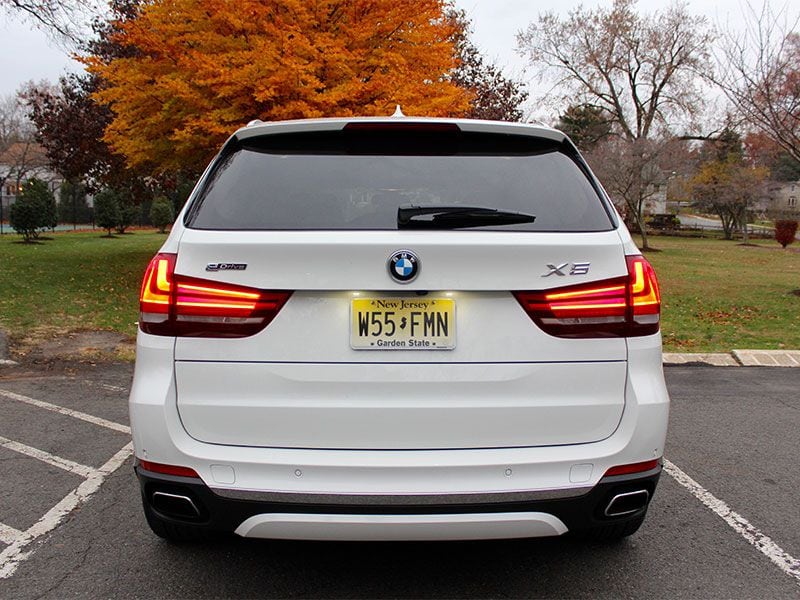
Photo by Miles Branman
Bottom Line
Choosing an alternative energy vehicle no longer needs to be an inconvenience. Those who want completely zero-emission transportation are more limited, but plug-in hybrids add efficiency and distinctive performance attributes to a conventional driving experience. With the xDrive40e, BMW has improved an already striking, comfortable SUV with instant torque, a quieter ride, and fuel-free short-distance trips. After federal incentives, the xDrive40e’s marginal price bump is well worth these benefits.
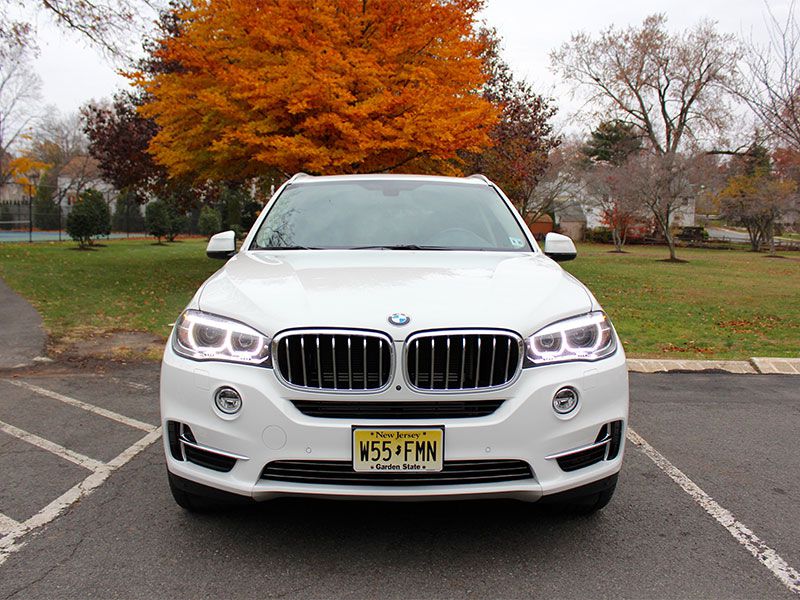
Photo by Miles Branman